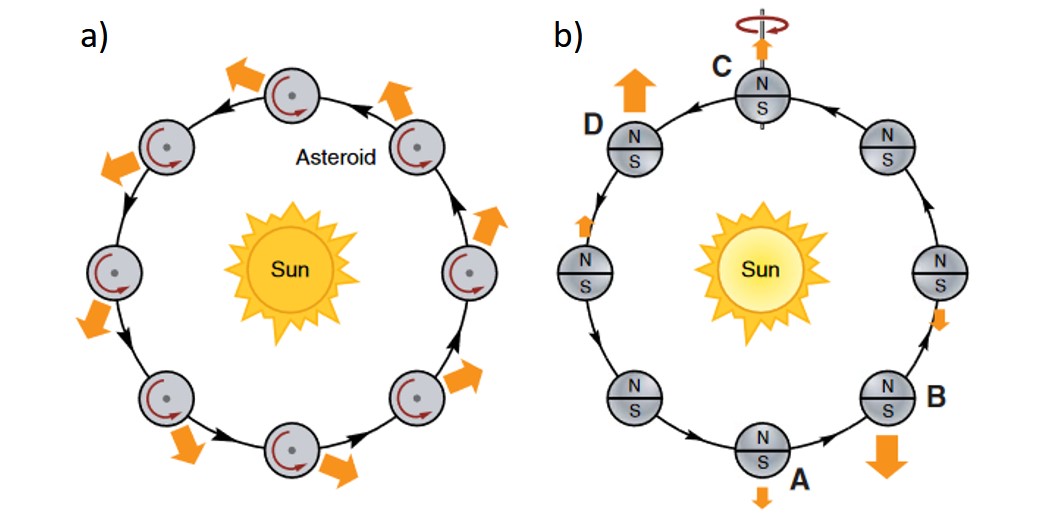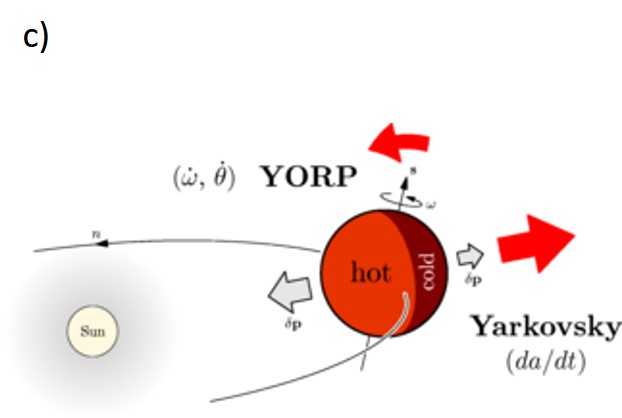The 'YORP effect' is short for the 'Yarkovsky-O'Keefe-Radzievskii-Paddack effect', named for the four researchers who proposed various aspects of it. First, it's helpful to define the Yarkovsky effect which describes how the orbits of small asteroids (about less than 30-40m diameter) can be altered by the tiny amount of thrust they exhibit as sunlight is re-radiated from the spinning body (Fig a). More specifically, an asteroid will absorb some of the light striking it from the sun and re-emit that energy as thermal radiation producing a very tiny amount of thrust to the asteroid. Thrust vectors may arise from both diurnal and seasonal effects as a function of the orientation of the asteroids spin axis (Figs a and b). In any case, the thrust is very, very small and although some orbital effects can be measured in only decades of time, it may take millions to billions of years before the asteroids orbit can be changed substantially. The long time-scale alteration of asteroid orbits from the Yarkovsky effect in part explains the continuously 'refreshed' population of near-Earth asteroids that we observe, since it is estimated that they should have all vanished by now (in the ~4.3 billion years of our solar system) by either impacting the sun, a planet, or being ejected from the solar system. Interestingly this effect was postulated by the Russian engineer I.O. Yarkovsky...in 1901; and it's taken almost a century before it had gained real attention. The Yarkovsky effect is today a major focus of study for solar systems dynamicists and aerospace engineers. The Yarkovsky-O'Keefe-Radzievskii-Paddack effect is an extension to the Yarkovsky effect that includes possible changes to the asteroids rotation rate and obliquity (Figure c).


Figures a and b showing diurnally and seasonally induced thrust, respectively, from the Yarkovsky effect (after Bottke et al. 2006) (Annu. Rev. Earth Planet. Sci. 2006. 34:157–91)



